The libelous claim that Israel is a colonial project causes harm to Jews worldwide and is simply not rooted in reality. Scores of archaeological evidence reveal a Jewish community in the Land of Israel that has lasted for millennia. Despite misleading and antisemitic arguments that Jewish people are colonizers of foreign land, Zionism, the Jewish self-determination movement, in reality, serves as a model for decolonization.
Ancient Accounts of Israel and the Jewish People
One of the earliest references to the Jewish people comes from the Merneptah Stele, an Egyptian artifact dating back to 1200 BCE. The stele commemorates the victories of the Pharaoh Merneptah over the Israelites. This marks the first known mention of Israel in ancient Egyptian literature, affirming the longstanding presence of the Jewish people in the region. In the picture to the left, the word “Israel” is highlighted in the artifact’s original Egyptian hieroglyphics. Though there are a handful of exact translations, the sentence reads, “Yisrael, his seed is scattered,” stressing the narrative of Jewish continuity.
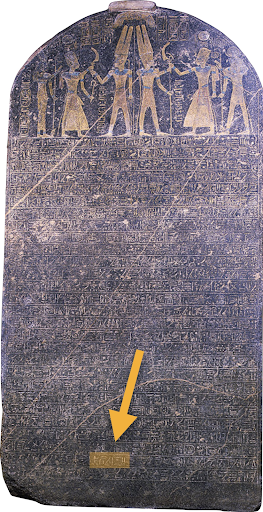
The Black Obelisk of Shalmaneser III is an Assyrian artifact from 841 BCE. It mentions the “House of Omri,” recording the tribute paid by King Jehu of Israel to the Assyrian empire after they had conquered the Kingdom of Israel. The obelisk is the only known contemporary image of an Israelite king, demonstrating the political and dynastic activities of the Northern Kingdom of Israel, therefore reinforcing the Jewish presence in the region.

The Tel Dan Stele, discovered in northern Israel, dates back to the 9th century BCE and contains an Aramaic inscription that mentions the Kingdom of Israel and the “House of David.” This significant find fortifies the biblical account of King David’s dynasty, serving as the oldest non-biblical account of the Davidic dynasty, thus providing tangible evidence of Jewish sovereignty in the land. It is currently located in the Israel Museum in Jerusalem embedded among a collection of thousands of artifacts from this era corroborating the existence of Jewish communities in the Land of Israel over two thousand years ago.
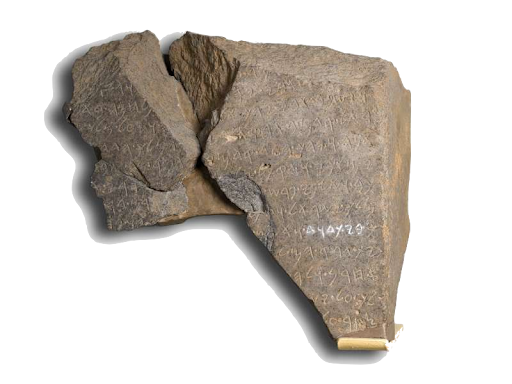
Two small silver amulets discovered in Jerusalem, dating back to the late 7th or early 6th century BCE, provide striking evidence of early Jewish religious practice. These amulets are the oldest known copies of biblical text. Uncovered in the Ketef Hinnom area, they predate the Dead Sea Scrolls by approximately 400 years. Inscribed with an iteration of the Priestly Benediction from Numbers 6:24-26, they invoke the name of the Jewish God, thereby reinforcing the foundational Jewish origins in Jerusalem. The presence of these amulets underscores the deep spiritual and cultural roots of the Jewish people in the region.
Related Reading: New Israeli Archaeological Discoveries Confirm Ancient Connection of the Land to the Jewish People
Return from Exile
After centuries of living in exile, Jews were granted the ability to return to the Land of Israel by Cryus, King of Persia. Documented throughout Ezra 1, this foreign ruler recognized the imperative for indigenous people to be restored to their homeland. This policy is cemented in the Cyrus Cylinder, written in 538 BCE on clay. By allowing those exiled by the Babylonians to return, Cyrus effectively impacted the Jewish story in favor of Zionism.
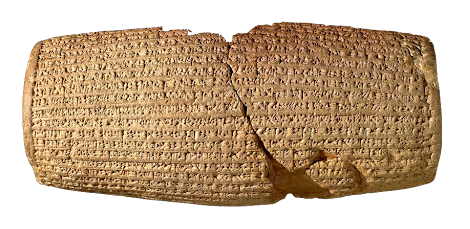
Discovered in the City of David in Jerusalem, various bullae with Yahwistic names revealed millenniums in which Jews have existed in this region. This congregation of bullae, which are small clay seals, feature Hebrew inscriptions that date back to the sixth and seventh centuries, reflecting the deep-seated Jewish presence in the land. In what was then known as the land of Judah, Jews were active in the economy and administrative activities. The same God referred to in the silver amulets is affiliated with the Jewish names on these stamps. These artifacts bolster biblical accounts of the First Temple period and use Hebrew letters to reaffirm distinctly Jewish activity in Israel.
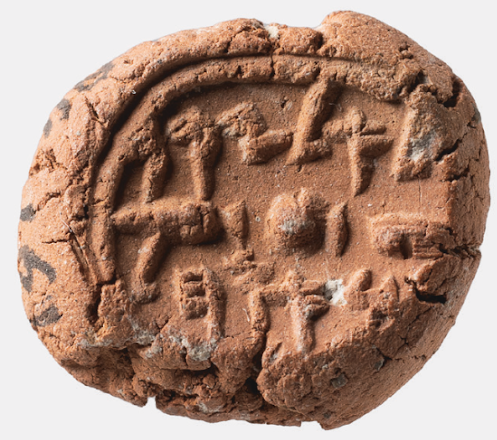
The Roman Era
Constructed in 81 CE, the Arch of Titus depicts the Roman pillaging of Jerusalem as the Jews were exiled from their homeland — again — and religious artifacts were looted as a symbol of the Romans’ victory. The pillaging of Jerusalem was so traumatizing to the Jewish people that many Jewish visitors to Rome refuse to walk underneath the Arc as an enduring form of resistance against Roman occupation. The Menorah, a consistent motif of the Jewish people, is pictured in the middle of the piece as a symbol of Roman supremacy over Jews. Therefore, it inadvertently illuminates the existence of a Jewish community in the land that they conquered so many centuries ago.
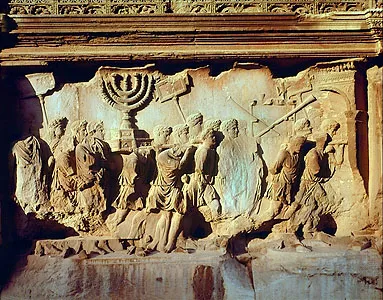
The Roman period left various indelible marks on the Jewish psyche, further exhibited by the remains of the Masada fortress. Excavated in the 1960s, King Herod’s first-century BCE stronghold serves as a powerful symbol of Jewish resilience. It was at Masada that Jewish rebels stood firmly against the Romans before the fortress was destroyed, and the Romans marked another victory over the land’s people. Today, Masada serves as one of the most popular tourist sites in Israel, in which visitors can interact with ancient cisterns, pottery, and engineering feats completed by Jewish architects. With areas of the fortress still yearning to be excavated, Masada prevails as one of the most poignant reminders of the Jewish connection to the Land of Israel — Jewish people died defending it thousands of years ago.
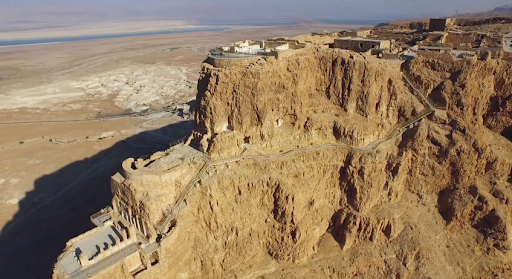
Historians say…
Beyond archaeology, the writings of Flavius Josephus, a first-century Jewish historian, provide an insider experience of Jewish life and Roman governance in Judea. In his work Antiquities of the Jews, Josephus details the Roman administrative presence in the region, including the taxation policies implemented by the governor of Syria, Cyrenius. Flavius notes, “Moreover Cyrenius came himself into Judea, which was now added to the province of Syria, to take an account of their substance, and to dispose of Archelaus’s money.” This account emphasizes both Jewish property and economic activities in Roman Judea. Josephus’s comprehensive records serve as a critical source, underscoring the continuous Jewish involvement in this land across millennia.
Benjamin Tudela, the 12th-century author of The Itinerary of Benjamin of Tudela, records Jewish activity at the Cave of Machpelah. Tudela, a Jew living in the Middle Ages, describes the religious practices being exercised distinctly at this place. He writes that casks of generations of Israelites are buried within the cave and that our forefathers constructed “a gate of iron” to protect those visiting their loved ones’ remains. Because of Tudela, the stories of connection between Jewish people and their ancestors buried in the Land of Israel resonate more deeply.
Lasting Jewish Practice
The discovery of the Dead Sea Scrolls in the early 20th century provides arguably the most compelling evidence of the Jewish people’s enduring connection to their land and heritage. These ancient manuscripts, which date back to the last three centuries BCE and the first century CE, include the earliest known copies of the Hebrew Bible, providing invaluable insights into Jewish life, law, and beliefs during the Second Temple period. Written in Hebrew, Aramaic, and Greek, these scrolls are a powerful symbol of Jewish spiritual and intellectual resilience. Their survival over two millennia affirms the enduring legacy of Jewish scholarship and the community’s unwavering commitment to preserving their sacred texts.

Israel is the Jewish Homeland
When British ships landed in North America in the late 16th century, they didn’t dig up Shakespeare plays and find ancient coins minted in English. By definition, colonial powers are not indigenous to the places they colonize. Jews have maintained a continuous presence in Israel since Judaism’s inception, despite numerous conquerors that have come along and expelled the Jews from their land. These exiles are not only thoroughly documented in Jewish literature and cultural evolution, but in continuous archaeological findings. Failed attempts to eradicate the Jewish people from their land have reinforced the urgency of the lasting existence of a Jewish country.
Sophie Kalmin is studying American Studies and Middle Eastern Studies at Emory University. Born and raised in Houston, TX, Sophie has worked with various Jewish communal organizations at home in Atlanta, and maintains an active role in Israel advocacy on her campus.
Liked this article? Follow HonestReporting on Twitter, Facebook, Instagram and TikTok to see even more posts and videos debunking news bias and smears, as well as other content explaining what’s really going on in Israel and the region. Get updates direct to your phone. Join our WhatsApp and Telegram channels!

